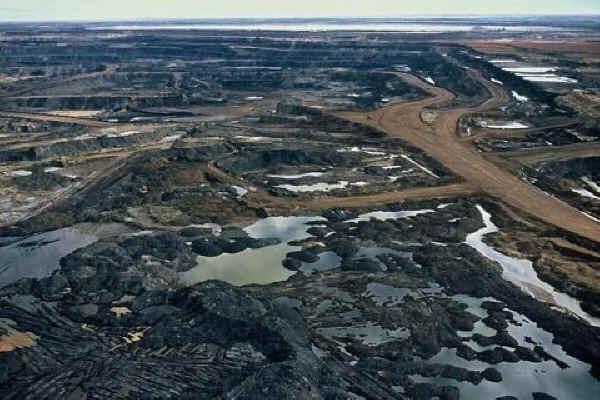 One of the unseen consequences of the lower gas prices in North America is that it is actually making it cheaper to extract the tar sands.
One of the unseen consequences of the lower gas prices in North America is that it is actually making it cheaper to extract the tar sands.
And that in turn is giving tar sands operators the confidence to expand production. So bizarrely cheap cleaner gas is fuelling the exploitation of the dirty tar sands.
Syncrude Canada Ltd., the world’s largest oil-sands operator, is one of the main companies benefiting from a natural-gas surplus that is causing lower prices.
The company currently consumes 340 million cubic feet of gas a day, more than every factory in New York state. It requires 850 cubic feet of gas to process just one barrel of bitumen into light crude.
So low gas prices make a real difference to Syncrude’s profit margin. In turn the gas prices are giving the company confidence to embark on an massive expansion plan.
Canadian Oil Sands Trust, the largest stakeholder in Syncrude’s oil sands project in northeast Alberta, has announced plans to expand production capacity by 60% over the next decade. The expansion plans will cost about $15 billion.
Marcel Coutu, chief executive at the Trust says “All this excess gas has been very positive for us. It’s been very helpful.”
Syncrude intends to increase production capacity from 375,000 barrels of synthetic crude oil per day to 425,000 barrels per day and raw bitumen production capacity to 600,000 barrels per day by 2020.
But the company does not plan to construct a new upgrading facility to turn the excess raw bitumen into synthetic light crude.
Instead, Syncrude will broaden its production to begin producing heavy blends of crude oil and then sell these direct.
Exxon, which through its stake in Imperial has a 25 per cent ownership stake in Syncrude, has been managing the project since 2006 and will continue to do so.
Is this the first signs of recovery in the tar sands after the recent cut-backs? Is the mining of Mordor getting back on track?
